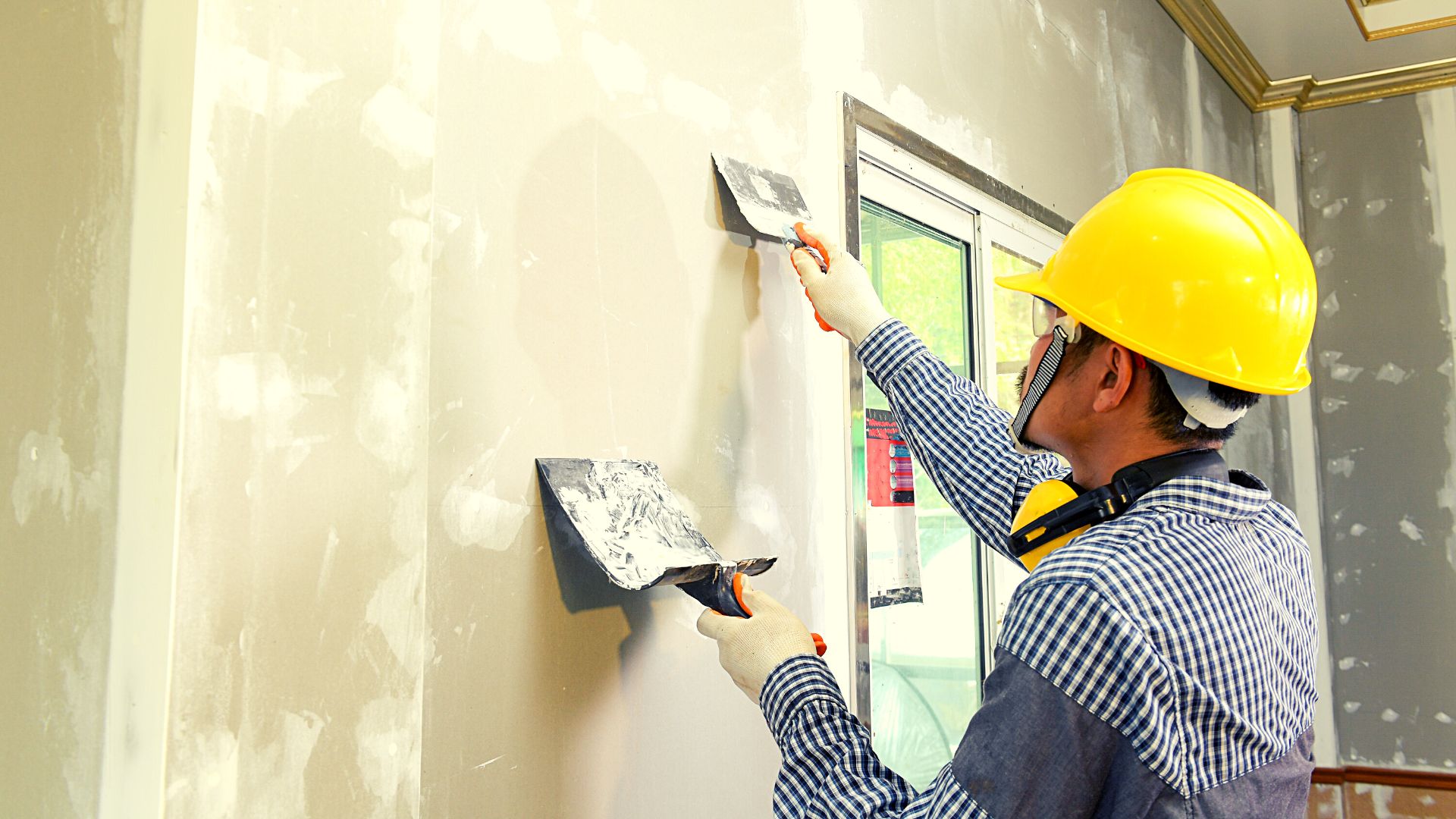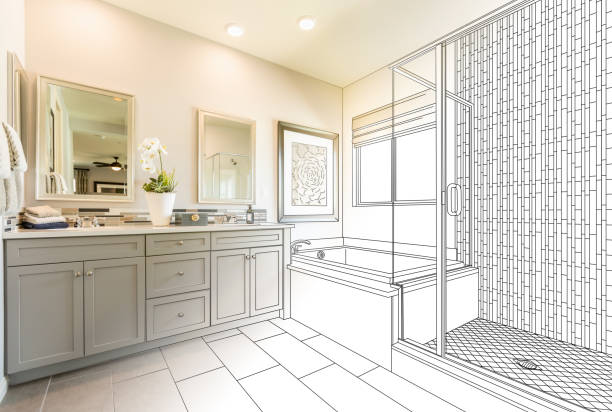How Drywall Is Made and Used
Drywall (also known as wallboard, plasterboard and gypsum board) is made by sandwiching a core layer of wet gypsum plaster between heavy paper or fiberglass surface sheets. It is available in a wide variety of thicknesses and framing specifications.
Certain types of drywall are engineered to resist mildew and mold growth. Contact Drywall Las Vegas now!

Drywall has become so commonplace that many people take it for granted. It is used in homes, schools and offices around the world, yet few understand how it is made or where the name originated. A gypsum core sandwiched between layers of paper, drywall is an easy to use and versatile building material. It is inherently fire resistant and, based on the type of top layer applied to it, can also provide resistance against abrasion, mold, mildew and sound transmission.
The drywall industry evolved from the original Sackett board, invented in 1894 by Augustine Sackett and Fred Kane. Their invention lowered the cost of traditional plaster by eliminating the need for constant supervision. It became popular as a more stable and durable alternative to wood framing and masonry walls.
In its current form, drywall consists of a noncombustible gypsum core wrapped in heavy paper or fiberglass mats on both faces and long edges. The product can be augmented with various additives, such as fire-retardant compounds, glass fibers and strengthening materials, to meet specific design requirements. Additives are also available to increase abrasion resistance and impact strength, lower water absorption (wax emulsion or silanes), reduce creep (tartaric or boric acid) or improve the appearance of the finished wall.
A few types of specialized drywall include acoustical panels that help mitigate the transmission of sound between rooms, and shaft liners for stairwells, elevators or utility raceways. Other specialized products include lead-lined drywall, which blocks x-rays in hospitals and clinics, and moisture, mold and mildew-resistant gypsum sheathing.
Paper
Drywall is the building material of choice for homes and commercial buildings because it reduces construction costs and time. It also helps protect people from the harsh effects of weather and climate, by keeping cool air from escaping during summer and heating from seeping into rooms during winter. It also minimizes noise pollution by creating a sound barrier.
The gypsum in drywall is not only effective against mold and mildew, but it also resists fire. It does this by soaking up water molecules from the air, thereby creating a thick insulating layer that prevents fire from spreading through walls. It’s also much easier to work with than plaster, as drywall can be cut easily by using utility knives or keyhole saws. It can even be cut to fit small features, such as light switch and outlet holes.
While drywall is not completely environmentally friendly, many manufacturers take back waste wallboard from construction sites and recycle it into new sheets. This helps reduce landfills and promotes sustainability. Alternatively, the material can be crushed and used as an amendment in soils that have been degraded by erosion or flooding.
In addition to recycling drywall, there are several ways you can use it in your home to help save energy. For example, by placing drywall in your kitchen and bathroom, you can save energy by cutting down on the amount of heat that is generated from cooking.
Another way to save energy is by installing a programmable thermostat. By allowing you to control the temperature of your house, a programmable thermostat can save you money on heating and cooling bills. It can even reduce your carbon footprint by reducing the amount of electricity used to power appliances and lights.
Tape
Drywall tape is used to cover seams and corners, repair cracks, and make other small fixes. It comes in two forms: paper tape and fiberglass tape. Paper tape is the most common type of tape in drywall construction, and it’s an excellent all-around choice for taping seams and corners. It has a light crease down the center that helps it fold easily for use in inside corners.
Mesh drywall tape offers several advantages over paper, including increased strength and moisture resistance. However, it’s more expensive and requires a slightly higher level of skill to use properly. It’s an excellent option if you’re doing a large project in a humid environment or if you need to patch small, rusty holes.
Skipping the taping process is a huge mistake that can lead to serious problems later on. Untaped drywall is visible, and it’s also more difficult to apply a fresh coat of paint or wallpaper. To avoid these issues, it’s important to take your time and do the job correctly.
Before starting the actual taping, get a mud pan or other long, shallow pan that holds joint compound. It should be able to accommodate your drywall taping knife, a tool used to apply the first layer of joint compound. For this step, it’s best to use a lightweight, sandable setting-type compound rather than a ready mix. Unlike quick-drying mud, setting compound hardens by drying and reacting with a catalyst in the pan. Choose a mix that has a hardening time of 20-, 45- or 90 minutes.
Joint Compound
Joint compound, also called mud or drywall mud, is the second coating applied to taped joints after a light coat of taping compound has been applied. It is a low-shrinking drywall mud that offers a strong bond and is easy to sand. Drywall joint compound typically comes in two forms: premixed and powdered. Powdered compound must be mixed with water to use and is typically stored at room temperature, which can make it less convenient than premixed joint compound.
When using a powdered joint compound, it is important to follow the instructions on the packaging and avoid adding too much water. The wrong amount of water can dilute the compound and reduce its performance. Premixed joint compound, on the other hand, is ready to use right out of the container and requires no additional water. This can save time and money because it cuts down on the preparation and clean up process.
Another benefit of using a quick-setting joint compound is that it can set in as little as 20 minutes. This is ideal if you are working in a cooler or humid environment as it allows you to complete the project faster and eliminates the need for waiting for the compound to dry between each application.
For a lightweight and high-quality joint compound, consider buying all-purpose joint compound in the familiar 5-gallon buckets. It has a remarkably durable composition thanks to its gypsum base and other materials like limestone, perlite, and clay. It dries quickly and is very easy to work with. This mud is also sandable and resists damage, which can help prevent the need for a costly repair job down the road.
Finish
Drywall is a popular construction material for building and remodeling homes, as well as office buildings and other commercial structures. It offers several benefits, including cost-effectiveness, fire and mildew resistance, and elegance. It also has better insulation properties than plaster walls and is easy to install and repair. Additionally, drywall is easily painted multiple times to change the look and feel of a room.
Drywall contractors and installers have the experience and training to ensure that your drywall is installed correctly and follows all building and safety codes. They also have the tools and supplies needed to complete your project quickly and efficiently. In addition, they can save you money on materials by buying in bulk. They will also use paints that are safe for your family.
Professional drywall contractors work in teams and can often finish a project much faster than you could on your own. They know how to use the best tools for the job and have honed their technique over the years. Additionally, they can finish a project within the time frame agreed upon, allowing you to get your house back to normal as soon as possible.
Another benefit of a career in drywall is that it doesn’t require a four-year university degree. This means that you can start making money sooner and have a better financial situation than many other careers. This is particularly important if you are planning on raising children or want to buy a home. It also allows you to make a positive impact on your community by constructing new homes, schools, hospitals and other vital structures. These buildings will give families a place to live, and students a place to learn.

